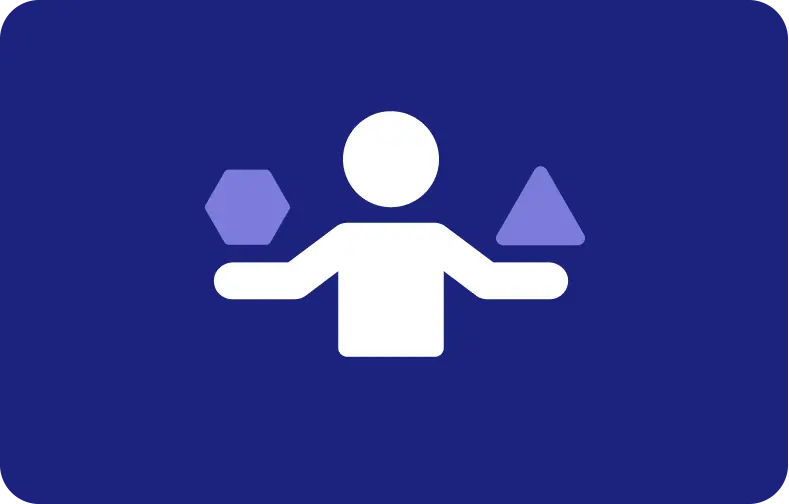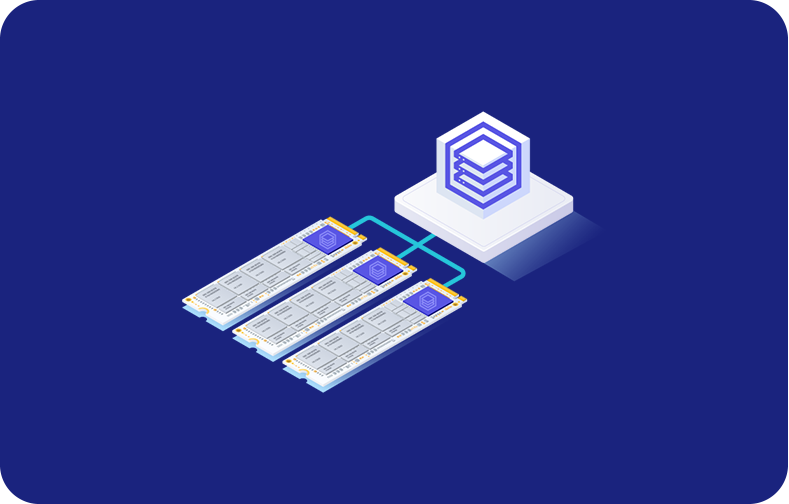RubyonRails: A Detailed Guide to Understanding the Key Concepts!
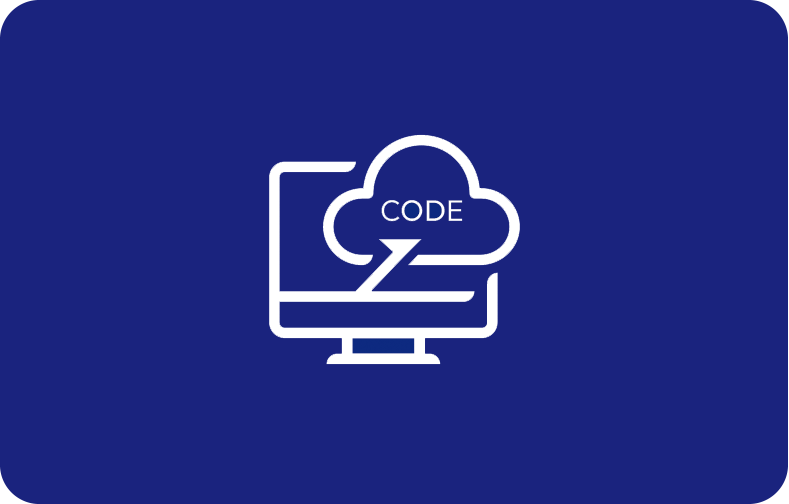
Finding it challenging to turn your web application concepts into reality? Feeling bogged down by the complexities of conventional web development platforms? If that sounds familiar, consider exploring Ruby on Rails. This user-friendly web application framework enables you to create and launch contemporary web applications swiftly and with minimal fuss.
But what makes Rails so special? It's an opinionated framework, meaning it streamlines common tasks with pre-built solutions, saving developers precious time and energy. Imagine a pre-assembled kitchen where everything has its place – that's Rails, only instead of utensils, you have tools for your database tables, connections, web pages, user authentication, routing, and more.
This article explores the world of Ruby on Rails, introducing you to its foundations, philosophy, and key points. Whether you are an experienced developer exploring a new framework or a beginner willing to know more about it, get ready – it’s time to reveal the secret behind the web development process made fast and entertaining!
What is Ruby on Rails Framework?
Danish engineer David Heinemeier Hansson developed the web application framework Ruby on Rails in 2004. He developed the Rails framework while he was employed on the Basecamp project, based on project management for the development of web applications. The idea originated from a desire to shorten the time needed to develop web apps and streamline the web app development process.
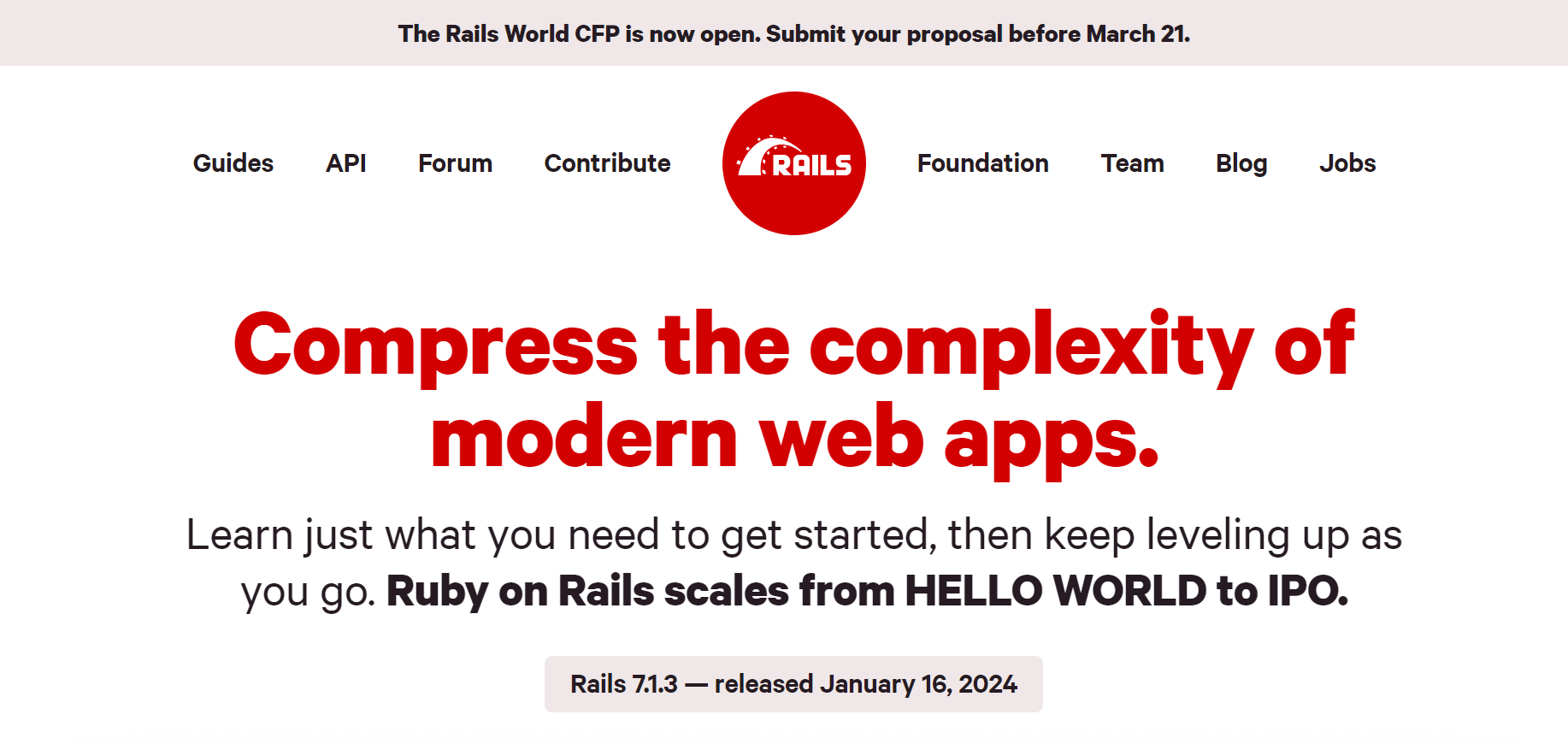
At first, Rails was released as an open-source project, and its code is available on the GitHub repository. under the MIT license. As it went on, the framework has advanced into a very popular and thoroughly applied tool for developing web apps, it has a big number of developers and contributors.
At its core, Ruby on Rails follows the model-view-controller (MVC) architectural pattern, which separates the application into three interconnected components: model, views, and controllers. Thus it provides modularity, scalability, and maintainability to developers, which helps in the development of complex web applications.
Ready to kickstart your Ruby on Rails venture? Look no further than VPSServer.com for dependable hosting solutions tailored to your requirements. With rapid servers, round-the-clock customer support, and effortless scalability, VPSServer offers the ideal environment for deploying and overseeing your Ruby on Rails applications.
Explore our hosting plans and embark on your Ruby on Rails journey!
Key Features of Ruby on Rails
Ruby on Rails possesses several distinctive characteristics that differentiate it from other web application frameworks. Some of its prominent features include:
Convention over Configuration
The Ruby on Rails concept of convention over configuration is one of its distinguishing features. This implies that instead of requiring developers to describe every little detail, Rails provides default structures, configurations, and conventions that make assumptions about how things should be done.
Rails free developers from the tediousness of repeating configuration operations by employing basic configuration settings that follow these default structures and standards. This allows developers to concentrate on creating the distinctive aspects of their applications.
Active Record: Data Interaction Layer
Active Record serves as a bridge between objects and databases, simplifying database operations. Included in Rails, it enables developers to manipulate database table as objects, facilitating CRUD (Create, Read, Update, Delete) actions by treating the database data structure itself as a table.
Plugins and Gems
Beyond its advanced syntax and architectural concepts, Ruby on Rails boasts a vast ecosystem of supplementary resources known as gems. These encompass a diverse array of functionalities, spanning from database access, handling, and authentication to testing and deployment, augmenting the efficiency and potential of Rails developers.
RESTful Routing
Rails supports RESTful routing, enabling the creation of URLs mirroring the application's structure closely. This approach facilitates the development and management of web applications with a clear and intuitive URL structure.
MVC Architecture
Rails divides The program into three separate components using the Model-View-Controller (MVC) architecture. These components are the model, view, and controller. This segregation simplifies maintenance, configuration code, and scalability of applications.
Scaffolding
Rails' scaffolding functionality automatically generates a rudimentary version of a model, view, and controller for a given resource. Building additional features can be facilitated by using this feature as a time-saving foundation.
Overall, Ruby on Rails exemplifies an elegant, simple, and productive attitude that enables developers to quickly and easily create high-quality web applications. Thanks to its strong features, user-friendly design, and active community, it is the cornerstone of contemporary online development.
What is Ruby on Rails used for?
Ruby on Rails is a versatile framework for crafting various web applications, spanning from uncomplicated blogs and online stores to intricate corporate software. Its adaptability, scalability, and efficiency in development render it an optimal solution for diverse purposes. Below are several common scenarios where Ruby on Rails creates finds applications:
Web Application Development
Ruby on Rails is amazing when it comes to the development of interactive web apps that depend on databases. Due to its MVC (Model-View-Controller) design, developing and managing complex applications can be done with ease through a well-defined structure. Rails is a toolset and set of conventions for developers so that they can speed up development and produce robust and scalable solutions– no matter whether they are making a social media platform, a project management tool, or an e-commerce website.
Prototyping and MVP Development
Rails excels in swift prototyping and Minimum Viable Product (MVP) development. Its convention-over-configuration philosophy, coupled with an extensive library of gems, empowers developers to promptly scaffold and refine ideas, expediting product launches. Startups and entrepreneurs frequently leverage Ruby on Rails to validate concepts, gather user insights, and iterate on features before committing to comprehensive development.
Content Management Systems (CMS)
Endowed with built-in support for CRUD (Create, Read, Update, Delete) operations and user authentication, Rails emerges as an excellent option for constructing content management systems (CMS). Developers leverage Rails to devise tailored CMS solutions to manage articles, images, videos, or other content types, catering to the specific requirements of their clientele.
E-commerce Platforms
Many well-known e-commerce sites, like Shopify, were built using Ruby on Rails. Rails provides a robust foundation for building online shops, controlling product listings and inventory control, enabling shopping carts, and guaranteeing safe payment processing. Because of its adaptability, developers can extend and modify e-commerce apps to meet various business requirements.
API Development
Rails also serve as a potent tool for crafting robust APIs (Application Programming Interfaces) to power web and mobile applications. With features like ActionController::API and Active Model Serializers, Rails simplifies the exposition of data and functionality to client applications in a consistent, scalable manner. Developers harness Rails' robust conventions and RESTful design principles to fabricate RESTful APIs that are comprehensible, maintainable, and consumable.
Real-time Applications
While traditionally associated with server-rendered web applications, Rails can also facilitate the development of real-time features employing technologies like WebSockets and Action Cable. Rails developers can create dynamic, collaborative applications with live updates and messaging features by integrating with frontend frameworks like React.js or Vue.js.
Ruby on Rails is a strong framework supporting a broad range of web applications, from huge, enterprise-level projects to MVPs and prototypes. It is suitable for developers willing to develop innovative, scalable web services and solutions due to its flexibility, efficiency, and rich library and tool ecosystem.
What are the Advantages and Disadvantages of Ruby on Rails?
Ruby on Rails offers several advantages to users. However, it also has its own set of limitations.
Let's explore them below.
Benefits of Ruby on Rails
Ruby on Rails boasts numerous benefits that establish it as a preferred framework for web development endeavors. From its graceful syntax to its extensive assortment of tools and libraries, Rails furnishes developers with an efficient and enjoyable platform for constructing web applications. Here are some primary advantages of Ruby on Rails:
Convention over Configuration: Rails is renowned for its Convention over Configuration (CoC) philosophy. This means it comes pre-equipped with conventions for common tasks, streamlining development and saving developers precious time. Imagine building forms, handling database interactions, and implementing security features without writing extensive boilerplate code. Rails allows you to focus on creating unique application logic, not reinventing the wheel.
Productivity: Rails is engineered to optimize developer efficiency. Its intuitive syntax, expressive code, and integrated generators empower developers to create fully functional web applications with minimal exertion. With features like scaffolding and automatic code reloading in development mode, Rails expedites the development process, facilitating rapid iteration and prompt delivery of features. Furthermore, the extensive array of pre-built solutions offered by the ecosystem of gems further accelerates development time.
Cost-Effectiveness: Choosing an open-source framework like Rails offers significant cost benefits. By eliminating licensing fees, companies can invest resources into development and customization. Additionally, the vast community resources and readily available talent make finding Rails developers more cost-effective than niche frameworks.
Versatility and Adaptability: While popular for web applications, Rails' reach extends beyond. Its adaptability shines in building APIs, command-line tools, and complex backend systems. This versatility makes it a valuable asset for companies building diverse solutions within their tech stack.
Community and Ecosystem: Ruby on Rails boasts a lively and encouraging network of developers, contributors, and fans. This community actively participates in enhancing the framework, curates various open-source resources (known as gems), and offers valuable assets such as documentation, tutorials, rails community, and discussion platforms. This diverse ecosystem guarantees developers ample support, tools, and knowledge to tackle challenges and nurture their projects.
Testing Support: Rails advocates for a methodology known as test-driven development (TDD) and integrates seamless testing capabilities with frameworks such as RSpec and MiniTest. Testing is important in Rails development, featuring fixtures, factories, and integrated testing tools. By incorporating tests alongside code development, developers uphold code quality, pinpoint bugs early on, and maintain confidence in the application's functionality throughout its development journey.
Performance and Scalability: While often attributed with "ease of use," Rails isn't a slouch in performance. It leverages a powerful and mature runtime environment (MRI) optimized for web development. Additionally, scaling with Rails is well-supported through various approaches, such as load balancing and database clustering. This allows applications to handle growing traffic and user bases seamlessly.
In essence, Ruby on Rails offers a compelling blend of efficiency, elegance, and scalability, rendering it a superb option for web development initiatives of various scales. Its emphasis on developer satisfaction, robust functionalities, and lively community has solidified Rails' standing as a leading framework in the realm of web development.
Disadvantages of Ruby on Rails
Rails, unarguably is an amazing web development framework, but you must also keep in mind its potential drawbacks. Familiarizing with Rails' limitations and challenges helps developers make clear decisions and prevent project problems. Here are some common disadvantages of Ruby on Rails:
Performance: One of the concerns frequently leveled against Ruby on Rails is how its performance is, compared with other frameworks and languages. Ruby is often the basis of an application in Rails, and it is an interpreted language, which makes it slower at execution time than compiled languages like Java or Go. Rails is already quite performance-improved. However, performance-sensitive applications may still need to apply optimization techniques such as caching, database indexing, and load balancing to gain the desired performance levels.
Learning Curve: Although Ruby on Rails is said to provide brief syntax with basic layout features and conventions, it is still complex and difficult for developers, especially those who are new to the framework or the Ruby language. Knowing Rails' conventions, architecture, and best practices may be a long process, especially for developers who have previously used other frameworks or languages.
Security Considerations: Of course, like any technology, Rails is vulnerable to security breaches. Security vendors should be alert and implement secure coding procedures to minimize the threats. Furthermore, keeping up with security patches and communal suggestions is also required.
Opinionated Nature and Limited Flexibility: Rails thrives on its "batteries included" approach, providing pre-built solutions for common tasks. However, this opinionated nature can limit flexibility for highly customized projects requiring unique architectures or workflows. Developers seeking complete control over every aspect of their application might find themselves working against the grain of Rails' conventions.
Evolving Ecosystem: The fast-paced nature of the web development landscape sometimes presents challenges for frameworks like Rails. Keeping up with emerging technologies and adapting existing applications to new trends can require extra effort from developers.
Debugging Challenges: Debug Rails applications can sometimes be intricate, especially if multiple gems or custom code interact unexpectedly. The dynamic nature of Ruby and the potential for cascading issues can require a deeper understanding of the framework and its underlying mechanisms.
Understanding the disadvantages of Ruby on Rails alongside its strengths is crucial for making informed decisions. By carefully considering your project's specific needs and constraints, you can determine if the trade-offs are acceptable and if Rails aligns with your development team's skillset and preferences. Remember, choosing the right framework involves finding the best fit for your unique project requirements.
What jobs do you need to know Ruby on Rails for?
Mastering Ruby on Rails opens doors to diverse and exciting career paths in the vibrant world of web development. Here's an exploration of various job roles where Ruby on the Rails development expertise is highly sought-after:
1. Web Developer (Ruby on Rails): This core role forms the backbone of building web applications using Rails. Responsibilities involve writing clean, maintainable, and efficient code, implementing features, interacting with multiple databases together, and ensuring application functionality and performance.
2. Back-End Developer (Ruby on Rails): These developers dive deeper into system architecture, API development, data processing, and integration with multiple services and databases, emphasizing the database and web server back-side components of web applications. They guarantee the database server's and web server's scalability and seamless operation, as well as the essential features of the application.
3. Full-Stack Developer (with Ruby on Rails): These developers wear many hats, working on both the user interface and the application logic. They do this by combining front-end and back-end knowledge with full stack framework. To create comprehensive online experiences, they combine their expertise with JavaScript frameworks like React and Vue.js with their knowledge of Rails.
4. DevOps Engineer (familiar with Ruby on Rails): In development and operations, these professionals automate deployment processes, manage infrastructure, and ensure continuous integration and delivery (CI/CD) pipelines for Rails applications. Their understanding of Rails helps them optimize deployment and troubleshoot issues effectively.
5. Software Architect (experienced with Ruby on Rails): Guiding the overall technical vision of projects, architects with Rails expertise define application architecture, make technology choices, and ensure scalability and maintainability. Their deep understanding of Rails principles helps them craft efficient and robust solutions.
6. QA/Testing Engineer (with Ruby on Rails knowledge): Ensuring application quality, these professionals design and execute test cases, identify and report bugs, and collaborate with developers to resolve issues. Understanding Rails internals allows them to write more effective and targeted tests.
7. Product Manager (familiar with Ruby on Rails): Product managers who work with Rails-based apps benefit from knowing the framework, even when their positions are not primarily technical. Making judgments on the features and functionalities of a product, as well as bridging the gap between business needs and technical feasibility, are all made easier with the help of this knowledge and the development team.
Beyond Specific Roles
Beyond these defined roles, Ruby on Rails skills are valuable assets for freelance developers, entrepreneurs building their own products, and individuals seeking careers in related fields like e-commerce, fintech, and social media development. Additionally, understanding Rails can benefit those transitioning into software development as its beginner-friendly nature facilitates faster learning and practical application.
Getting Started with Ruby on Rails
To begin working with Ruby and Rails, download and install them on your computer. Following the guide covers rails integration.
Ruby
Navigate to the official Ruby website, accessible at https://rubyinstaller.org/downloads/, where you'll find an array of online resources dedicated to installing Ruby and programming. Upon arrival, immerse yourself in the wealth of information and the active support and community engagement the site offers.
To kickstart your Ruby code journey, locate the prominent 'Download' button, positioned strategically to guide enthusiasts like yourself toward acquiring the necessary tools for your Ruby code development.
Embark on this click, a simple yet pivotal action that sets the wheels in motion for your exploration into the world of the Ruby programming language.
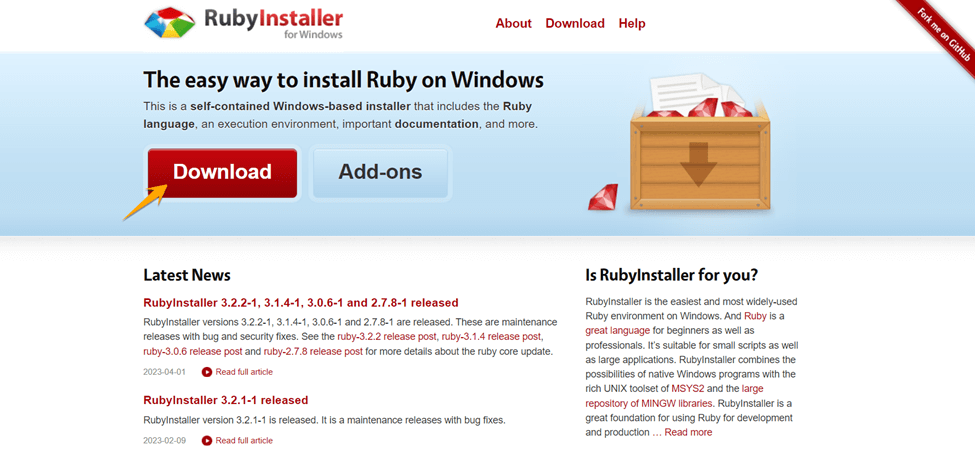
Select the version of Ruby that fits your requirements from the 'WITH DEVKIT' option. This choice allows you to pick the specific version of Ruby that includes the necessary development kit (DEVKIT), providing you with the tools and resources essential for your development needs.
Take a moment to consider your preferences and the compatibility of the current version with your project requirements before making your selection.
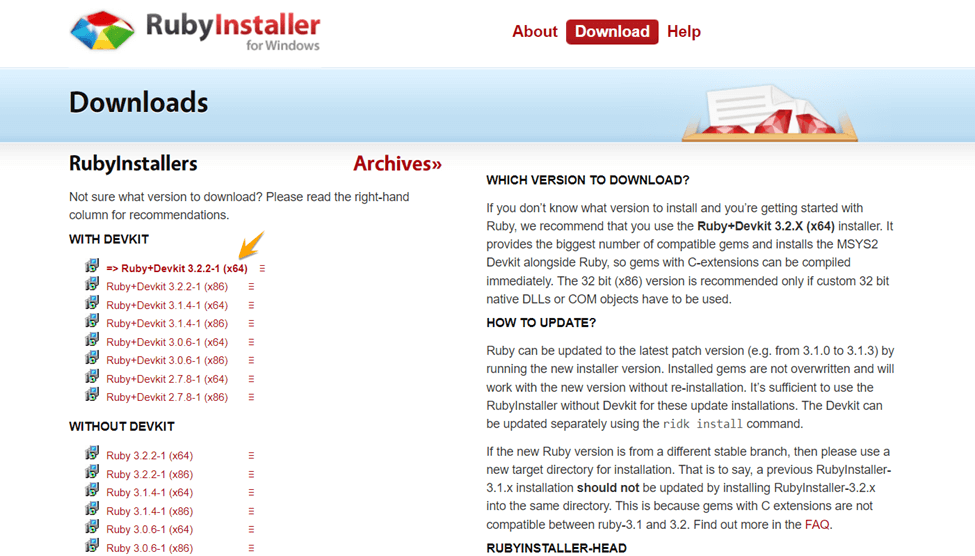
Once the download of the ruby file begins, make sure to save the file to your computer. This step ensures that you have a copy of the ruby version of the Ruby installation file readily available for the next phase of the installation process.
You can store the file on your computer's storage by simply clicking the 'Save' button or selecting the relevant option.
Double-clicking the downloaded file will start the installation procedure after the download is finished. However, with this command, the setup wizard opens and guides you through the installation process of Ruby on your system.
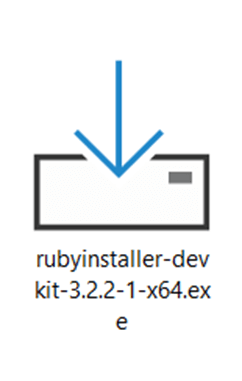
Simply locate the downloaded file in your chosen destination and double-click on it to kickstart the installation journey.
The license will be reviewed and accepted whenever the installation wizard is opened. We urge you to spend some time going through the terms and conditions if you are ready to proceed. Upon agreeing to the terms, proceed by selecting your preferred installation path. This step allows you to designate where Ruby will be installed on your computer.
Pick a location that works with your organizational structure and preferences. After making your choices, continue installing Ruby on your PC by following the on-screen installation instructions below.
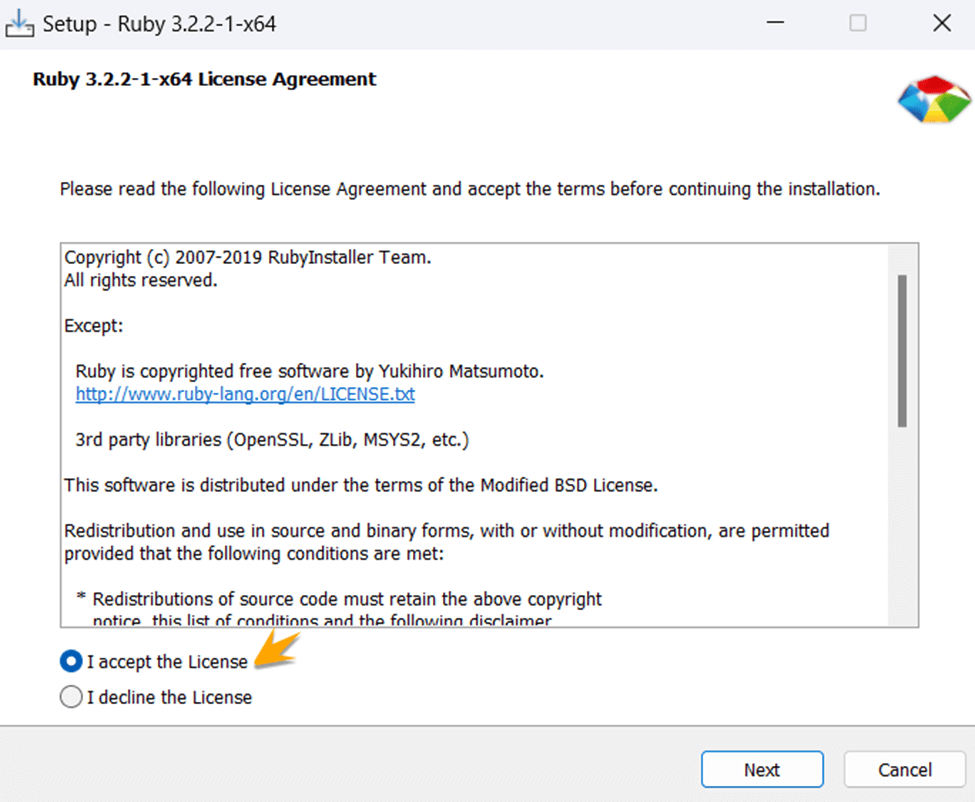
Press the 'Install' button to proceed with the installation process. By doing this, you're letting the installation wizard know you're prepared to install Ruby on your machine.
When you click, the installation wizard will walk you through each procedure step until it is finished. To guarantee that Ruby installs smoothly and successfully on your machine, just follow the on-screen instructions.
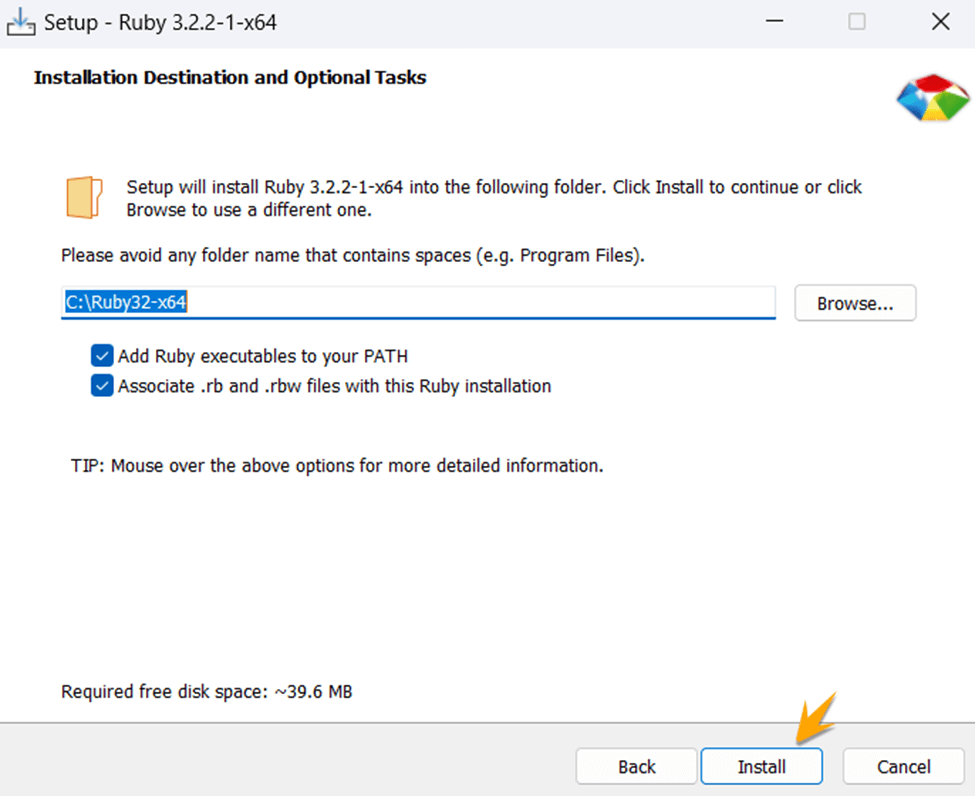
Upon completion of the installation process embedded ruby, click on the 'Finish' button. This action signifies the successful installation of Ruby on your computer.
By clicking 'Finish', you confirm that you have completed all necessary steps to install Ruby and are ready to begin using Ruby for your development projects. This simple yet important action finalizes the installation rails integration process and allows you to proceed with confidence into the world of Ruby programming.
To install additional dependencies, follow these steps:
-
After completing the Ruby installation, you may need to install additional dependencies to ensure smooth functionality.
-
Open your command prompt or terminal.
-
Type the number '1' and then press 'Enter.' This action selects the first option for installing additional dependencies.
-
Follow any further prompts or instructions provided by the installation process to complete the installation of the necessary dependencies.
-
Once the installation is finished, you'll be ready to use Ruby with all the required components and dependencies installed.

You can confirm that Ruby has been successfully installed on your system by executing the following code in the command line. prompt:
ruby -v

Install Rails
First, open up Visual Studio Code. You can do this by finding its rails logo and clicking on it.
Once Visual Studio Code is open, we need to open something called the terminal. This is a special window where you can type commands. To open it, go to the top of the screen and click on "Terminal" and then choose "New Terminal."
Now, in the terminal, type the following:
gem install rails
Upon completing the text, press the 'Enter' key on your keyboard. With the help of this command, your computer will download and install Rails, a necessary tool for creating web apps. Please be patient as everything may take some time to download and install. After it's finished, you may begin developing your apps with Rails!

To verify the correct installation of the Rails application, launch the Command Prompt or Terminal. Then, type "rails -v" and press 'Enter'. If the Rails application is installed properly, you'll see its version number displayed.
rails -v
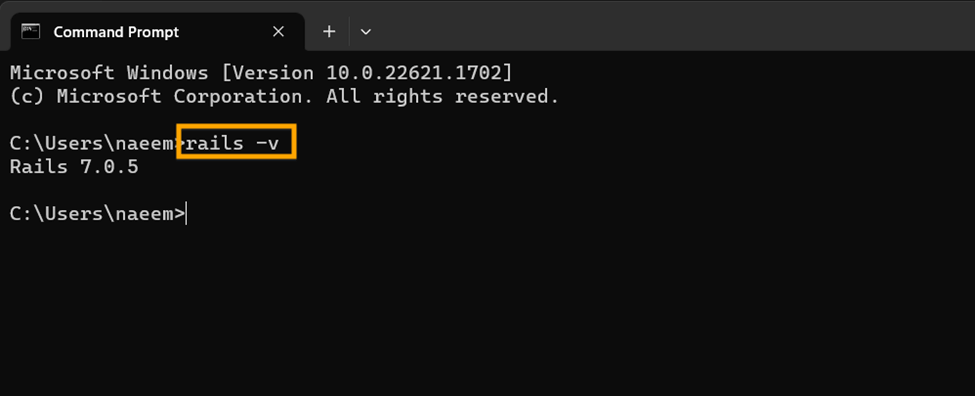
Creating and Running a Rails Application
First, create a new folder on your computer and name it appropriately, such as 'ror' for Ruby on Rails projects.
Next, open Visual Studio Code and load the 'ror' folder you just created.
Once the folder is loaded, open a new terminal within Visual Studio Code.
In the terminal, run the command:
rails new my_ror_project
Within the 'ror' folder, this command will generate a brand-new Ruby on Rails project called 'my_ror_project'.
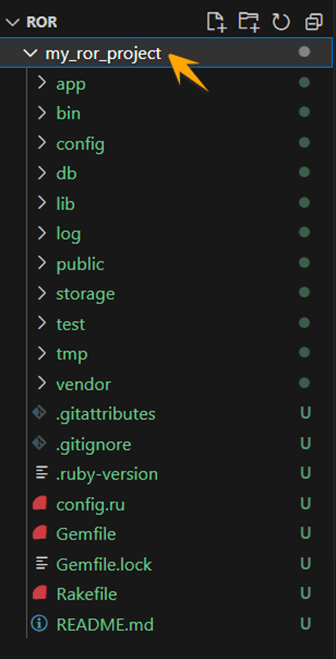
Use the terminal's 'cd' command to navigate to the just created project folder. For example:
cd path/to/your/project/folder
Once you're inside the project folder, start the Rails server by running the following command:
rails server
This command will initiate the Rails web server first, allowing you to run your Ruby on Rails application on the web server locally.
After successfully creating, your Ruby on Rails application is now open at port 3000 on your local server.
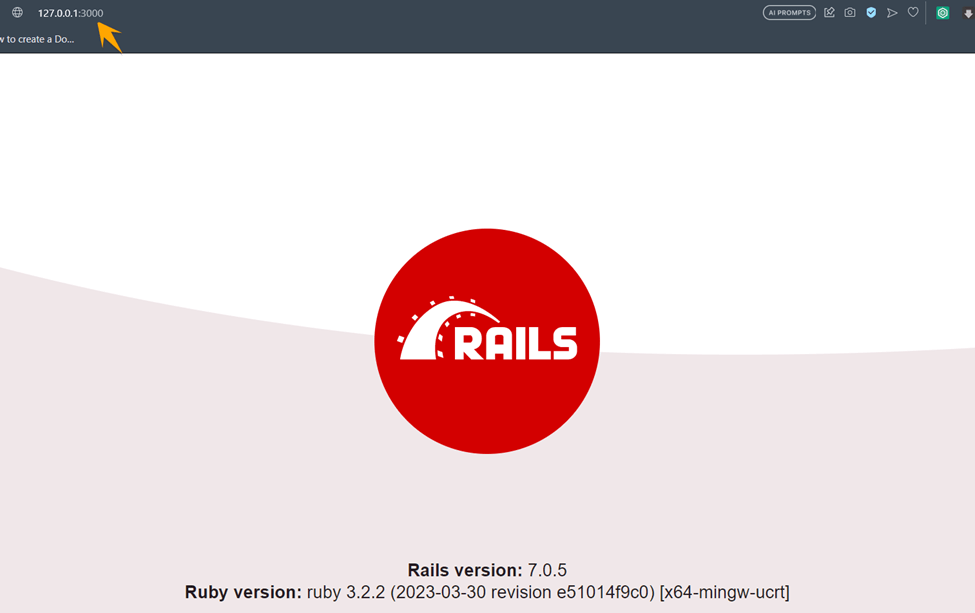
Make VPSServer.com your first pick for high-performance hosting if you want to make sure your Ruby on Rails apps are hosted as efficiently as possible. VPSServer is a hosting company that offers a variety of services, which consist of dedicated servers, cloud hosting, and managed services, and is meant to provide the needed services to the developers of Ruby on Rails and the businesses as well.
By choosing VPSServer, you'll benefit from:
High-performance infrastructure: Using the latest data centers and our cutting-edge hardware, your Ruby on Rails programs work fluently and effectively with VPSServer.
Expert support: The experienced VPSServer support hands are always on the lookout, 24/7, to provide expert backup services if the need arises and to ensure your applications are stable at all times.
Scalability: VPSServer solutions are covered by various plans that provide you with a flexible Ruby on Rails framework that can be integrated into various stages of your business growth and evolution.
Try out the Rails on the Ruby and the VPS server today. Find more information about our VPS hosting services and see how we can help you leap ahead with Ruby on Rails apps.
When to Use Ruby on Rails
Here are some of the main scenarios where you can get benefits from the use of Ruby on Rails:
Convention-Driven Projects
Projects that rely on a process that is convention-based and largely structured are the ones that could well benefit from Ruby on Rails. Rails come with built-in code rules and defaults that help developers with how to organize their code, file structure, and database schema.
However, this adherence to these conventions by developers makes it possible for them to have a consistent code base, reduce cognitive overhead, and work more effectively with other devs. Rails' intended design makes the code development process easy by eliminating decision fatigue and allows developers to focus on implementing the business logic rather than configuring the frameworks.
Startups and Small to Medium-Sized Businesses
Ruby on Rails is popular among startups and SEM enterprises that intend to construct scalable and affordable web apps. An ecosystem of gems, community support, and organizational productivity tools that help companies get their applications out faster, respond to market feedback, and scale the businesses they build on top. Rails caters to developers' joy and code simplicity, which is parallel to the agile, iterative development that startups and SMBS are looking at.
Content-Heavy Applications
Applications centered around content management, publishing, and collaboration can benefit from Ruby on Rails' development ease and adaptability. Its Model-View-Controller (MVC) architecture and built-in RESTful API support suit platforms like blogging sites, wikis, and social networks. Rails' scaffolding, routing, and asset management tools aid in content creation, organization, and delivery, enhancing user experiences with dynamic content.
Projects Requiring Integrations and Customizations
Ruby on Rails excels in projects needing integrations with third-party services, APIs, and libraries. Its extensive gem ecosystem offers solutions for common tasks like authentication, payment processing, and geolocation. Rails' flexibility enables developers to extend functionality through plugins, mixins, and metaprogramming, tailoring applications to specific needs and seamlessly integrating with existing systems.
Final Words
Rails has emerged as a dominant competitor in the web application development genre, armed with rapid prototyping, scalability, and great community support. The Convention-over-Configuration approach, complex business logic, and applicability for e-commerce platforms and content management systems enable it to be chosen as a strong candidate for various projects.
Its usability advantage is further enhanced by its real-time feature, thus solidifying its standing as a powerful and adaptable tool for contemporary web application development. As the demand for robust and efficient online applications grows, Ruby on Rails is, without a doubt, the most reliable ally. This allows developers to turn their ideas into quick and effective web solutions.
Frequently Asked Questions
Do modern web developers still use Ruby on Rails?
Yes, Ruby on Rails still serves its purpose and is widely used for developing web-based applications. Especially for startups, SMEs, and projects where time to market and rapid prototyping are key factors.
Can I use Ruby on Rails for mobile applications?
Ruby on Rails is primarily used to create web apps, but you can also integrate Ruby on Rails with frameworks like React Native or RubyMotion to create mobile applications that can interface with your own Rails applications and backend APIs.
What are some notable companies using Ruby on Rails?
Many companies like Basecamp, GitHub, Airbnb, Shopify, Kickstarter, and Airbnb use Ruby on Rails to build their platforms. This demonstrates its scalability and dependability in practical uses.
Is Ruby on Rails suitable for large-scale projects?
Yes, you can use Ruby on Rails for large-scale applications if the proper architectural measures and optimization techniques are implemented to handle maintainability, scalability, and performance.
How does Ruby on Rails handle database migrations?
Rails uses a robust migration system that allows versioning and tracking changes to your application's database schema, ensuring smooth evolution and rollback capabilities.








